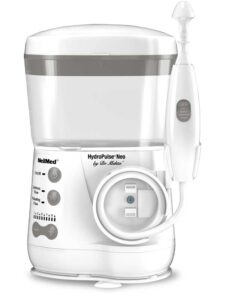Empty Nose Syndrome. Prevention and Treatment Part one
Empty nose syndrome. You never heard of it? That’s not surprising. It is a term that only came into use in 1994. It refers to persons who have had surgery where the shelves on the side of the nose called turbinates, have been removed and now the nasal chamber is ‘empty”. Symptoms include nasal pain, loss of sense of smell, poor sleep, thick post nasal discharge, constant feeling of not getting enough air, and depression
Why is Empty Nose Syndrome (ENS) important? Because persons who have ENS suffer greatly, and it is a condition that CAN be prevented.
In persons who have ENS the doctor removed these turbinates because they were large, blocking the nose and the patient complained of not breathing through his nose. Makes sense, if a clot blocks an artery you remove it. If a foreign body like an eraser blocks breathing you remove it. Seems logical , except that Dr Eugene Kern of Mayo Clinic found that these patients complained of the nose being blocked and they weren’t getting enough air! How could this be? If you looked in the nose, they nose was open from front to back. If you looked at the CAT scan, the nose was wide open. This was a paradox.
Dr Steven Houser of Cleveland figured it out. When you have a garden hose, if you narrow the opening the water squirts 6 feet. When you open the hose fully, the water dribbles at your feet. So, the correct pressure to get the air properly to the lungs was not present. In addition, Dr Houser showed that there are certain sensors in the nose that register the air passage and these sensors were not registering the air flow; much like covering the eyes and you can’t see the eye chart, these patients didn’t sense the air passing through.
Another paradox about ENS; Before surgery to remove the turbinates, the patients may have been stuffy and had nasal obstruction, but had few infections. These same persons after surgery have repeated sinus infections – even though the blockage had been removed! This is easily explained: the turbinates are shelves on the side of the nose. There are three on each side. Think of them as store shelves loaded with bolts of wool. The wool represents the mucosa or skin of the turbinate which contains large blood vessels that warm, moisten and filter the air on its way to the lungs. It is richly supplied with important nerves. There are mucus glands that secrete the mucous that moistens the air going to the lungs, and also traps bacteria, pollen, and dust. The mucus contains important enzymes, including lysozyme that are disease fighters. From the mucus surface there are millions of fine hairs called cilia . These wave in synchrony to move that liquid blanket out of the nose to the stomach where the bacteria are disposed of.
But if the turbinates are removed, then there is no mucus blanket; air to the lungs enters cold and dry, and bacteria can remain in the nose and sinuses, and multiply. Without the cilia moving that layer of mucous – this is called mucociliary clearance – the normal defense system of the nose is gone and the patient is subject to frequent sinus infections. Without the cilia movement these infections are more difficult to treat.

